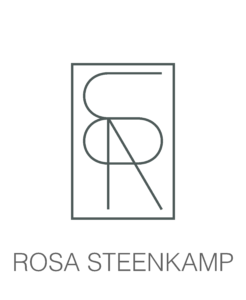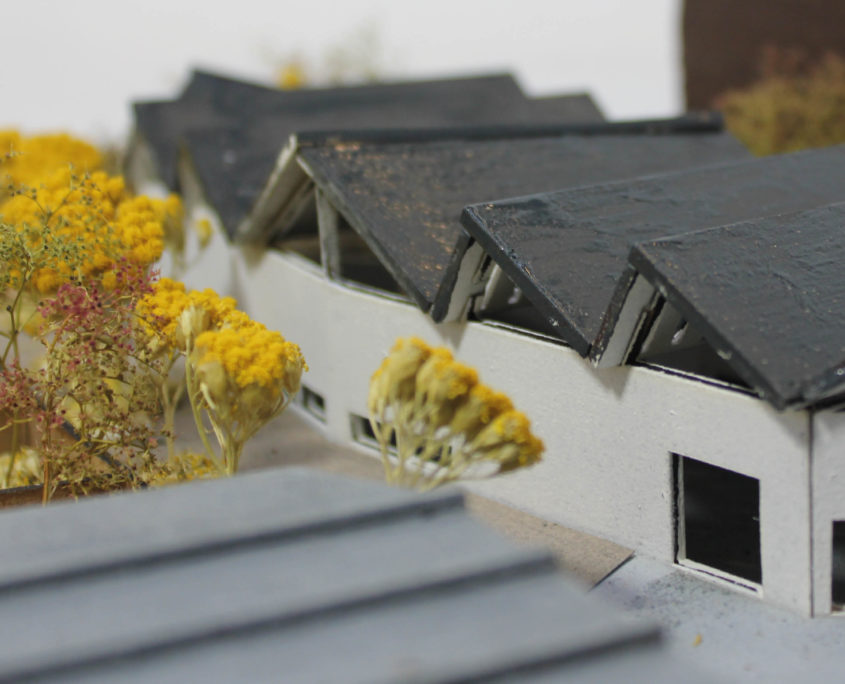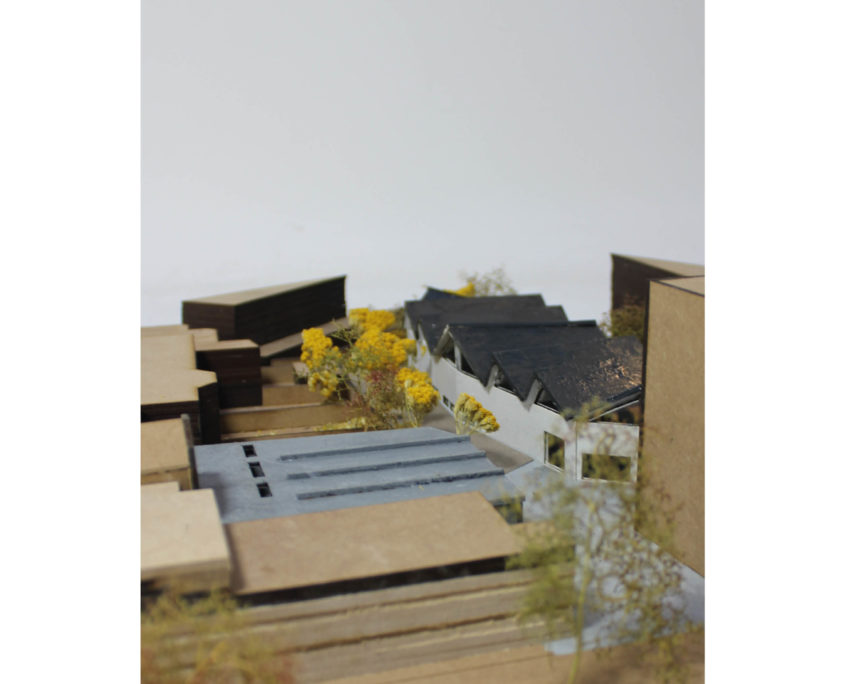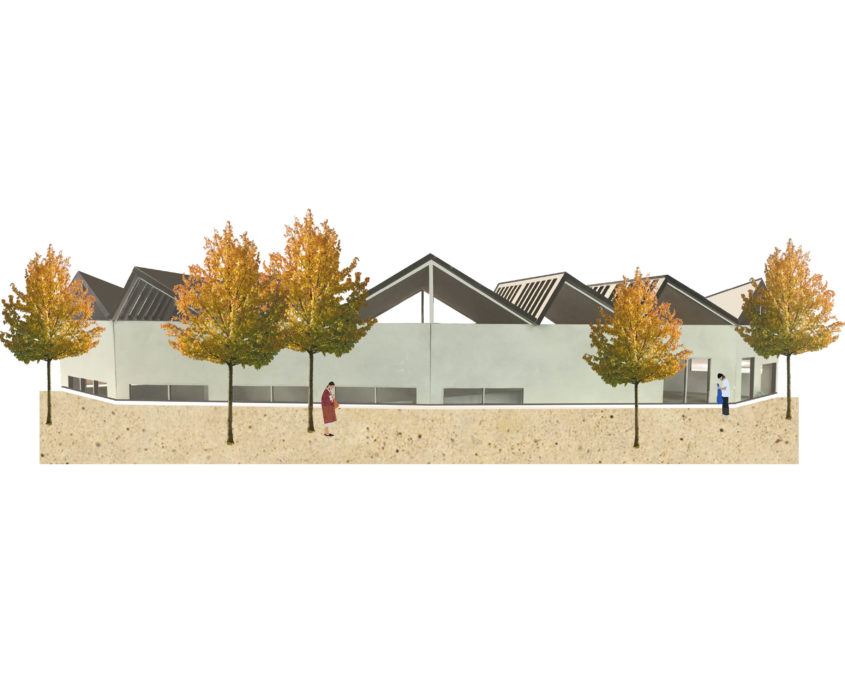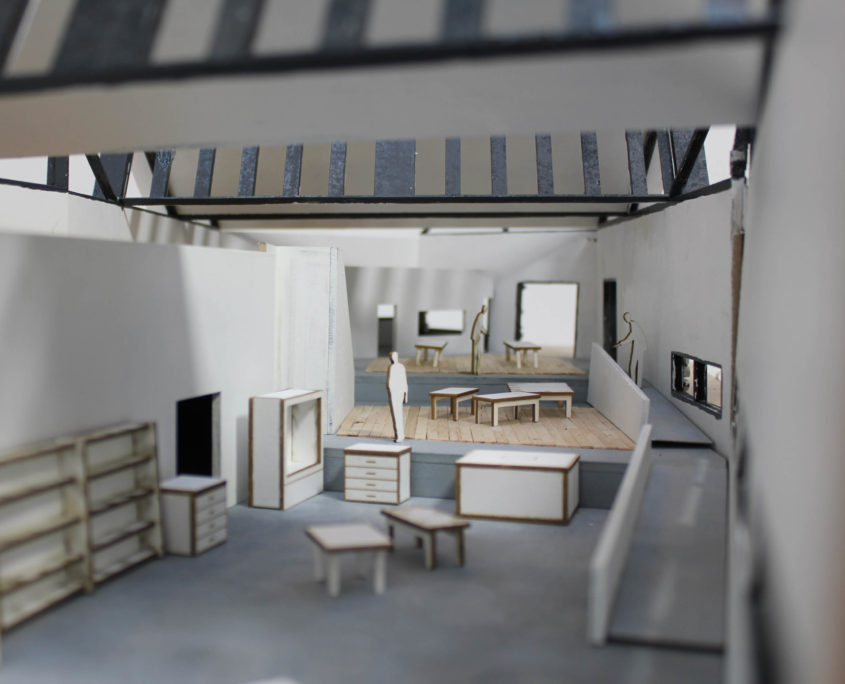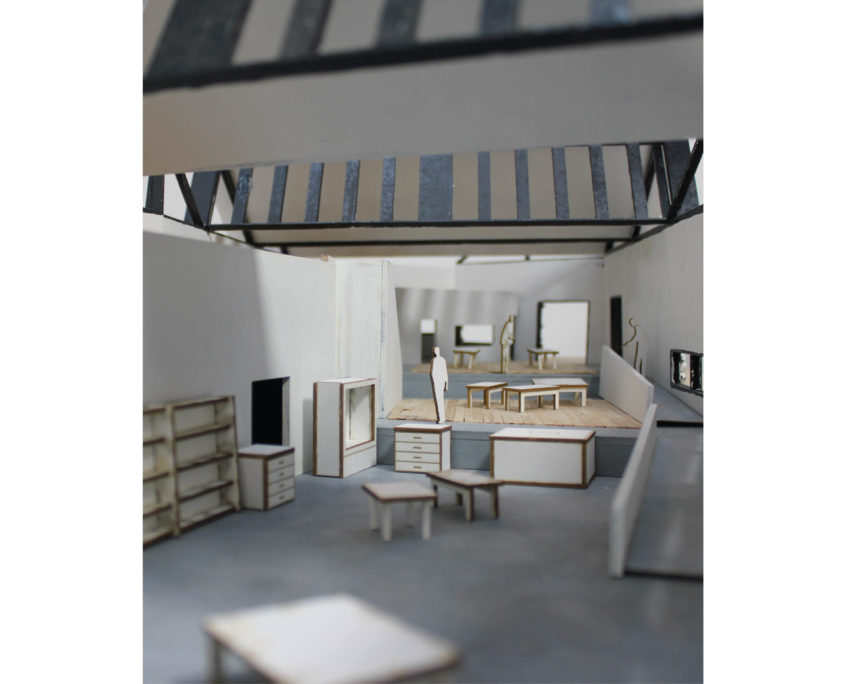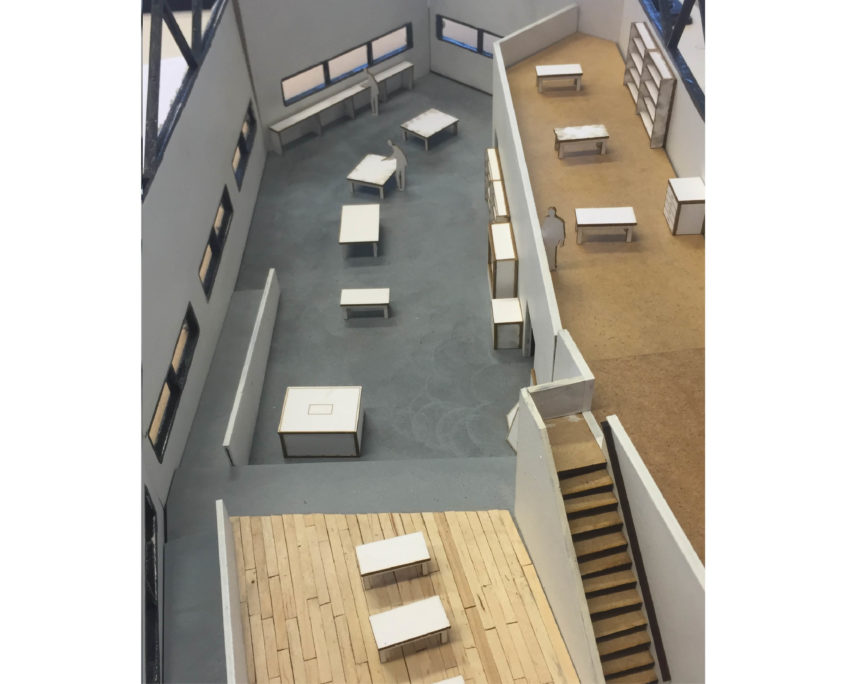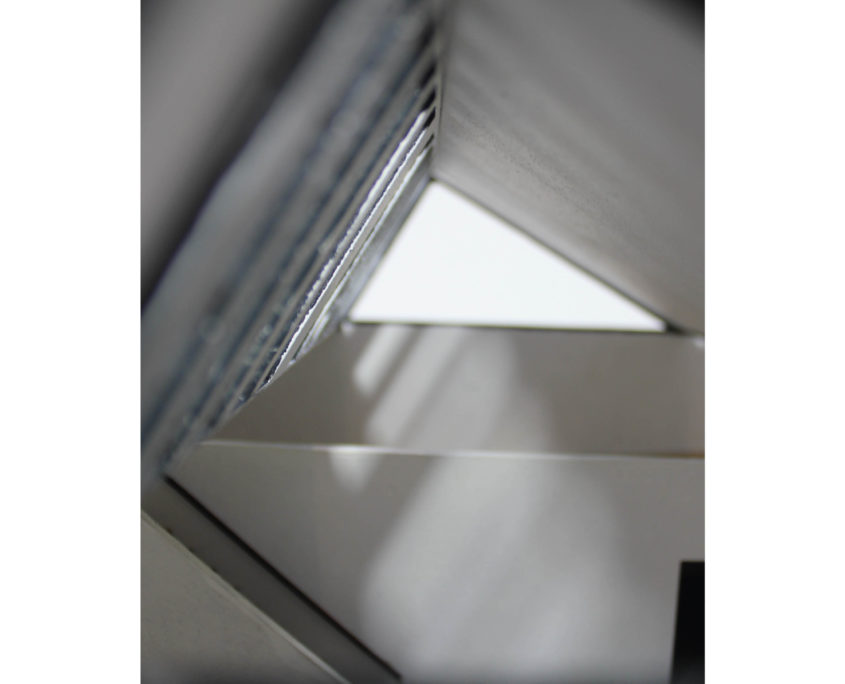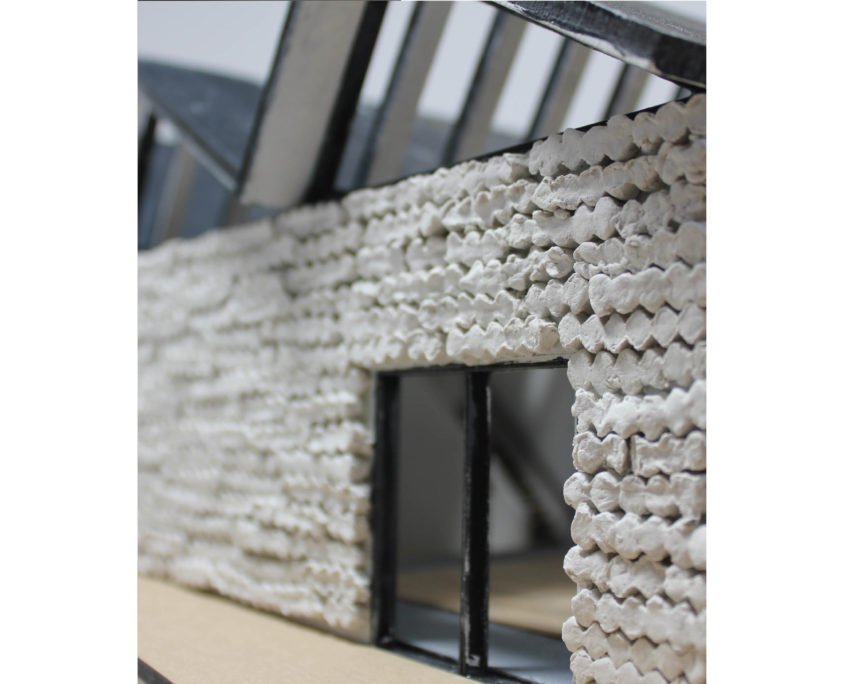Location
Nieuwe Binnenweg
Rotterdam (NL)
Program
Print atelier
Area
200 m2
University
Semester project
MSc Architecture
Chair of Interiors, Buildings, Cities
Delft University of Technology
Delft (NL)
Tutors
F. Cornelisse
S. Milinovic
Print Production Place
PDF drawings
Print Production Place
Jan van Eyck Academy
The refererence for this project was a workshop that has a rich history but was reconceptualised due to economical reasons: the print workshop of the Jan van Eyck Academy in Maastricht. From its foundation the print workshop was an essential element of this school, facilitating a community of post-graduate researchers in the areas of art, architecture, and design.
After severe economic cuts in the national cultural budget that the school was depending on, the Academy decided a radical turn towards commercialisation of its facilities.
What at first appeared to be highly compromising the integrity of the institution, finally led to a larger degree of independence. The canteen was was turned into a public restaurant, spaces were rented to practitioners related to the school and the print workshop began to function as a manufacture, specialised in the field of Riso printing and acting as a publishing company for refined art publications.
Meanwhile, the print workshop became widely renowned for its expertise and quality. It is still the essential ingredient of the school.
Bringing the concept of the workshop to Rotterdam
It was a feasible thought that the concept of the print workshop could be transported to other locations and develop a similar relation with its immediate and remote public. In this MSc. design studio of the Chair of Interiors, Buildings, Cities, the idea was tested to transplant the workshop as a core ingredient to a proposed site in Rotterdam, adding a series of associated spaces to it, such as an exhibition and event space, a restaurant, and a shop. The latter were secondary and were seen as a medium to set the scenario. Depending on the interpretation of the case, these secondary spaces could be altered, different in dimensions or exchanged for other type of uses.
Project area
The site to host the print workshop was located on the border between neighbourhoods from different epochs. On the one side the Nieuwe Binnenweg, an arterial road from the centre of Rotterdam to the West, with its main building structure from the 19th century, and at the time still open to the ‘Land of Hoboken’ to the South. On the other hand the extension of the city into this open land based on the plan of 1927 by the architect W.G. Witteveen. The slight difference in height within the site still reminds one of the encounter of these two layers.
The project area concerned three available spots: one central, one to the site of the Nieuwe Binnenweg, and one at the Mathenesserlaan. The site contained a conglomerate of existing structures of indoor and outdoor spaces.
Three of the buildings were listed as monuments: two villas from the end of the 19th century at the Nieuwe Binnenweg that were intact at the front but severely deconstructed at the rear side and a small tower on the Mathenesserlaan, built in 1938 as the first building of the extension plan. This tower was designed by the architect H.C. Lelie as a new location of the Schroevers Institute, a secretarial school for women. Initially the school only occupied one room at the ground floor, toghether with a shop for office supplies. The upper floors were conceived as apartments and were gradually turned into spaces for the school. The director of the school, Mrs. M. S. L. Lanen, had a penthouse on the top floor. The extensions at the back of the original building are of a later date, and were not listed.
In 1992, the Schroevers Institute had left the building. Until 2007, the broadcasting Radio Rijnmond occupied the tower, its extension, the villas on the Nieuwe Binnenweg and their contemporary annexes. Since they left, all of the spaces are vacant. The hall in the back of the yard dates from 1941 and had no monumental status. It had been as a gym since the 70’s and currently hosts a children’s daycare.
The current state of the site was a testimony of past developments, growth and shrinkage, and of meaningful and trivial descisions.
Print Production Place
This project was a sound reconceptualization of the entire site. The structure of the ground floor deserved most of the attention, since this was the place were the urban manifested itself most.
The relevance of the project oscillated between an urban scale and a refined detail level in order to understand the tissue of the city at the specific spot.
